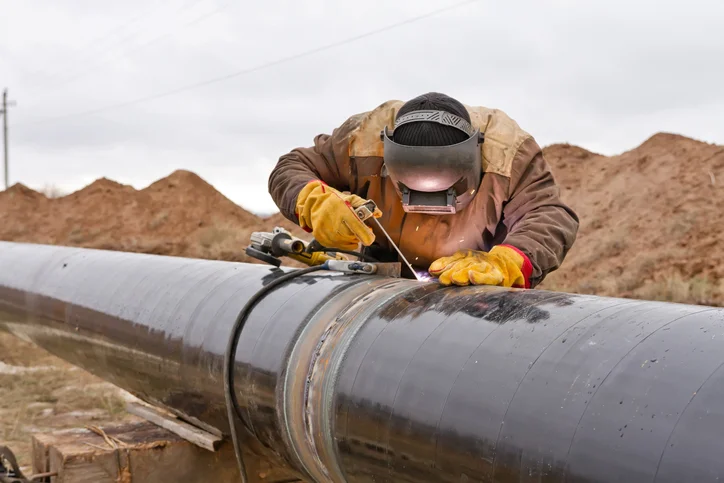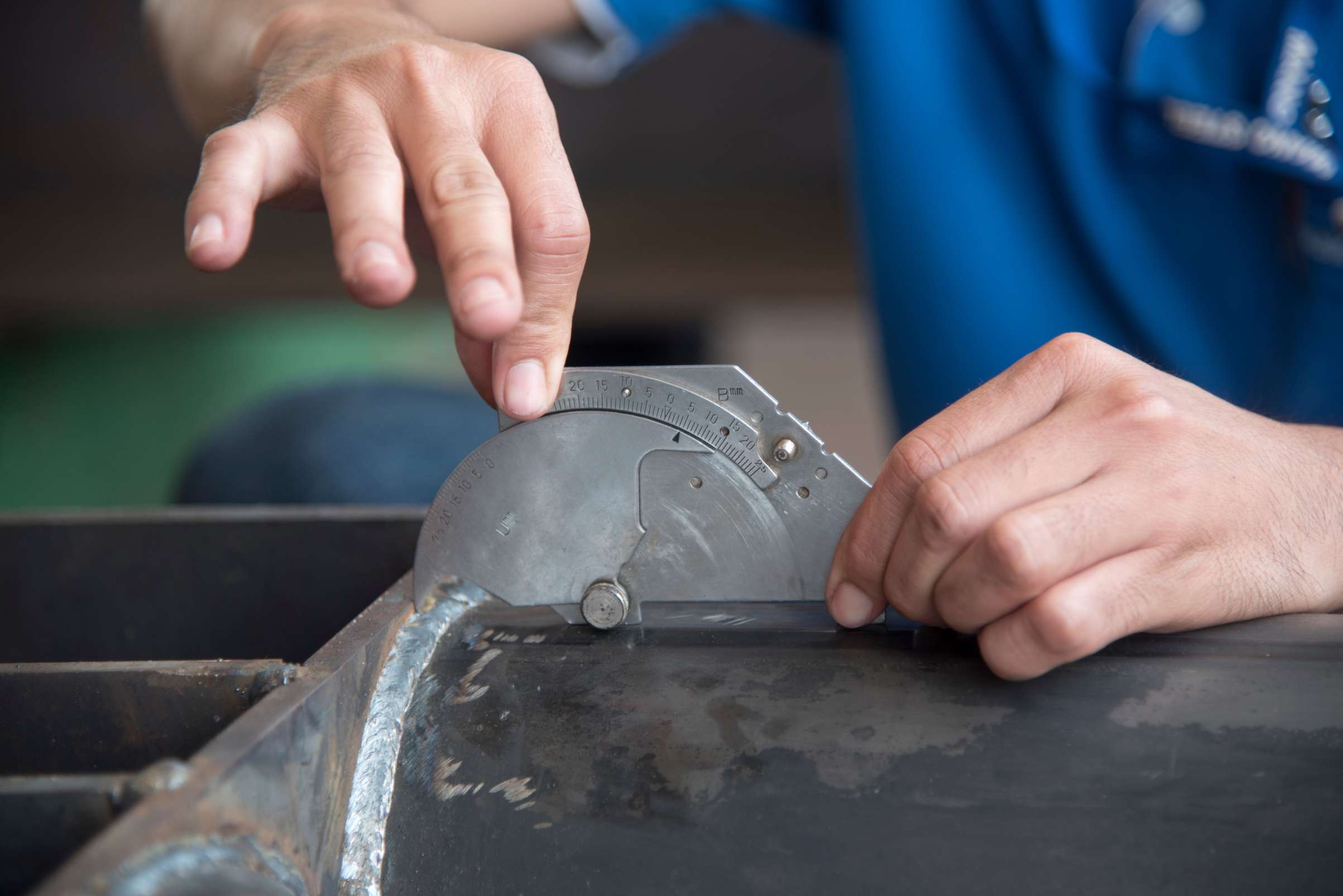Pipeline Welding Inspection: Securing Pipelines with Precision and Competence
Pipeline Welding Inspection: Securing Pipelines with Precision and Competence
Blog Article
Comprehensive Overview to Pipe Welding Inspection: Making Sure Integrity and Security in Pipeline Building and Upkeep
The stability and safety of pipes are extremely important in today's facilities landscape, underscoring the important function of welding examination in pipeline construction and upkeep. Pipeline Welding Inspection. The complexities entailed in welding evaluation raising important inquiries about market criteria and the developing modern technologies that may redefine these methods.

Relevance of Welding Inspection
Welding examination plays a critical duty in making sure the integrity and safety of pipeline systems. It offers as a fundamental procedure that validates the quality and integrity of bonded joints, which are typically the most vulnerable points in pipe construction. Via organized assessment, inspectors can determine prospective flaws such as splits, porosity, and insufficient fusion, which may jeopardize the structural integrity of the pipeline.
The importance of welding inspection expands beyond plain compliance with sector requirements; it likewise safeguards public health and wellness and the atmosphere. If failures occur, pipes bring hazardous products pose substantial risks. Effective inspection methods help avoid ruptures and leakages, minimizing environmental damage and securing neighborhoods. Additionally, detailed evaluations can boost the long life of pipeline systems, reducing the demand for costly repair services and downtime.
Along with making sure safety and conformity, welding examination promotes a culture of top quality guarantee within companies. By prioritizing inspection throughout the welding procedure, business can construct a reputation for reliability and excellence, inevitably causing enhanced client self-confidence and service opportunities (Pipeline Welding Inspection). Hence, the relevance of welding evaluation can not be overstated in the context of pipeline construction and maintenance
Trick Welding Procedures
Numerous welding processes are employed in pipe building, each with its very own advantages and applications. Amongst one of the most commonly used approaches are Shielded Steel Arc Welding (SMAW), Gas Tungsten Arc Welding (GTAW), and Gas Metal Arc Welding (GMAW) SMAW is preferred for its versatility and capacity to do well in numerous ecological conditions, making it suitable for area applications.
GTAW, usually described as Tungsten Inert Gas (TIG) welding, is acknowledged for its capacity to generate premium welds with outstanding control over warm input, making it excellent for thin-walled pipelines and stainless steel products. GMAW, or Steel Inert Gas (MIG) welding, offers high deposition rates and is efficient for large-scale tasks, commonly used in the manufacture of pipelines in regulated atmospheres.
In Addition, Submerged Arc Welding (SAW) is made use of for its deep infiltration and high performance, particularly in the construction of large-diameter pipes. Each of these procedures adds to the general honesty and security of pipeline building and constructions, enabling welders to choose the most proper technique based upon product kind, project needs, and environmental problems. Recognizing these crucial welding processes is crucial for efficient pipeline welding inspection.
Common Problems and Their Impact

Porosity, characterized by little gas pockets entraped within the weld, weakens the material and can lead to leakages. Fractures, which may occur as a result of thermal anxieties or incorrect cooling, can propagate and result in structural failure under pressure. Undercutting, where the base metal is deteriorated along the weld grain, minimizes the reliable cross-section of the pipeline, increasing go to my site the threat of crack.
Incomplete blend takes place when the weld steel does not effectively bond with the base steel, resulting in weak locations that might stop working under anxiety. Slag inclusion, the entrapment of non-metallic product within the weld, can likewise deteriorate the joint's stability. Identifying and attending to these problems early in the construction procedure is crucial to making certain the long-lasting reliability and safety of pipe systems, thereby securing both the environment and the facilities.
Inspection Tools and strategies

Aesthetic inspection is the initial line of protection, allowing examiners to determine surface abnormalities, misalignment, or various other visible issues. Ultrasonic testing uses high-frequency audio see post waves to spot inner defects, giving precise deepness measurements and defining defects without damaging the weld. Radiographic screening utilizes X-rays or gamma rays to create images of the weld, allowing the recognition of internal spaces, splits, or additions.
Magnetic fragment testing is especially reliable for detecting surface area and near-surface stoppages in ferromagnetic products. This technique includes using a magnetic area and fine iron bits to the weld, disclosing defects with the build-up of particles at flaw websites.
In enhancement to these strategies, specialized devices such as automated ultrasonic testing devices and digital radiography systems boost inspection precision and efficiency, guaranteeing a detailed evaluation of pipeline welds during building and upkeep.
Ideal Practices for Conformity
Following ideal practices for compliance in pipeline welding evaluation is important for making sure the honesty and safety and security of the infrastructure. Organizations must establish an extensive high quality administration system that lines up with industry standards such as ASME, API, and AWS. This includes developing detailed welding procedures that define the credentials, materials, and techniques required for welders.
Routine training and qualification of evaluation employees are important to maintain high proficiency degrees. Inspectors ought to recognize with various non-destructive screening (NDT) methods, including original site ultrasonic screening, radiographic testing, and aesthetic evaluation, to successfully determine potential issues.
Documentation plays an important duty in compliance; preserving precise records of assessments, weld procedures, and employees certifications assists to guarantee traceability and accountability. Set up audits and reviews of welding practices ought to be carried out to identify areas for improvement and guarantee adherence to established methods.

Conclusion
In verdict, the execution of extensive welding examination methods is extremely important for making sure the honesty and safety of pipeline building and maintenance. Continual enhancement in examination processes will certainly contribute to the longevity and integrity of pipeline systems, underscoring the critical duty of welding examination in the market.
The stability and safety of pipelines are extremely important in today's framework landscape, emphasizing the vital role of welding assessment in pipeline building and upkeep. Recognizing these key welding processes is essential for reliable pipe welding inspection.
Adhering to best techniques for conformity in pipe welding examination is essential for making sure the honesty and safety of the infrastructure.In conclusion, the application of strenuous welding inspection protocols is extremely important for making certain the honesty and safety and security of pipe building and construction and upkeep. Continuous improvement in evaluation procedures will certainly add to the long life and integrity of pipe systems, emphasizing the crucial function of welding examination in the market.
Report this page